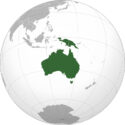 Antarctica is the harshest continent on the Earth due to its coldest, windiest, and driest climate. It is different from the other 6 Continents because it has no country and permanent human residents. Antarctica is the frozen world and is entirely covered with thick ice that accounts for 70% of Earth’s fresh water. Only scientists and researchers stay here for a short time in dedicated stations. Despite the harsh environment, it is inhabited by some animals including penguins, seals, and whales.
Antarctica is the harshest continent on the Earth due to its coldest, windiest, and driest climate. It is different from the other 6 Continents because it has no country and permanent human residents. Antarctica is the frozen world and is entirely covered with thick ice that accounts for 70% of Earth’s fresh water. Only scientists and researchers stay here for a short time in dedicated stations. Despite the harsh environment, it is inhabited by some animals including penguins, seals, and whales.
Geography
 Antarctica is located in the extreme south of the planet Earth surrounding the South Pole. The continent itself is surrounded by the Southern Ocean and is covered with thick ice. The ice covering the continents is estimated to be 2 km thick. The average height of Antarctica is 2,500 km which is higher than any other continent.
Antarctica is located in the extreme south of the planet Earth surrounding the South Pole. The continent itself is surrounded by the Southern Ocean and is covered with thick ice. The ice covering the continents is estimated to be 2 km thick. The average height of Antarctica is 2,500 km which is higher than any other continent.
Antarctica is the 5th largest continent by land area covering about 14 million km2. The Southern Ocean which surrounds Antarctica is very cold and experiences frequent storms and helps in regulating global temperatures.
Climate
 The Temperature of Antarctica usually drops to -80°C (-112°F) in the interior regions. However, the lowest recorded temperature in Antarctica was -89.2°C (-128.6°F) which was recorded by the Soviet Vostok Station. The regions near the coastal line are warmer as compared to interior regions. They have an average temperature of -2°C (28°F) in summer months.
The Temperature of Antarctica usually drops to -80°C (-112°F) in the interior regions. However, the lowest recorded temperature in Antarctica was -89.2°C (-128.6°F) which was recorded by the Soviet Vostok Station. The regions near the coastal line are warmer as compared to interior regions. They have an average temperature of -2°C (28°F) in summer months.
Antarctica is one of the two polar Deserts on the Earth; the other is the Arctic polar desert. It receives less than 2 inches (50 mm) of precipitation on average in the form of snow. Very low precipitation makes it the driest place on the Earth. The speed of winds in this continent can reach up to 200 km/h (124 mph) which is comparable to the wind speed of hurricanes.
Land Features
Antarctica despite being an isolated and remote continents is full of incredible land features. These land features help scientists learn about Antarctica’s climate and its impact on the whole planet. Here are some famous land features:
Antarctic Ice Sheet
The Antarctic Ice Sheet is the single largest piece of ice on the Earth which accounts for 98% ice of the continent. Its average thickness is 2 km and some places are even and can reach up to 4 km. The single piece of ice sheet holds about 70% of Earth’s fresh water and helps in cooling the planet by reflecting Light.
Mount Erebus
 Antarctica despite being so cold also features few active volcanoes. Mount Erebus, located on Ross Island, has been an active Volcano since 1972 having a permanent lava lake. This volcano continuously releases smoke and gas bubbles.
Antarctica despite being so cold also features few active volcanoes. Mount Erebus, located on Ross Island, has been an active Volcano since 1972 having a permanent lava lake. This volcano continuously releases smoke and gas bubbles.
Dry Valleys
 Some places in Antarctica are free from ice sheets. One of the famous dry valleys are McMurdo Dry Valleys. They have very little ice mass but are extremely cold and dry.
Some places in Antarctica are free from ice sheets. One of the famous dry valleys are McMurdo Dry Valleys. They have very little ice mass but are extremely cold and dry.
Subglacial Lakes
The surface area of Antarctica is frozen but underneath the thick ice sheets, there are hundreds of subglacial Lakes. The most famous subglacial lake, Lake Vostok, has remained sealed for millions of years. Scientists are working on lakes to learn about ancient life forms.
South Pole
 One of the most prominent features of Antarctica is the South Pole. It is located at the southernmost point of the Earth.
One of the most prominent features of Antarctica is the South Pole. It is located at the southernmost point of the Earth.
Facts
- The geographical and magnetic south poles in Antarctica are also not located on a single point. Instead, they separated from each other by a distance of 2,500 km (1,550 miles).
- The tallest peak in the Antarctic continent is present on Mount Vinson at a height of 4,892 meters (16,050 feet).
- Emperor Penguins are the largest species of penguins and they live in the Antarctic continent.





